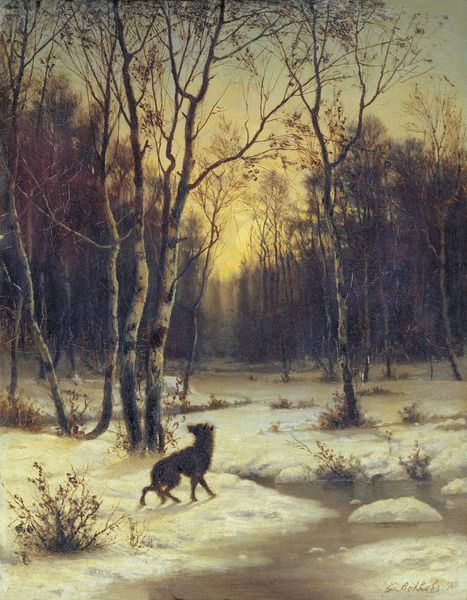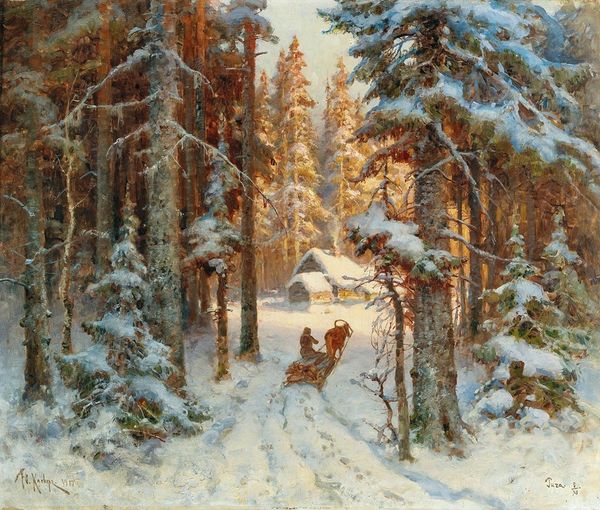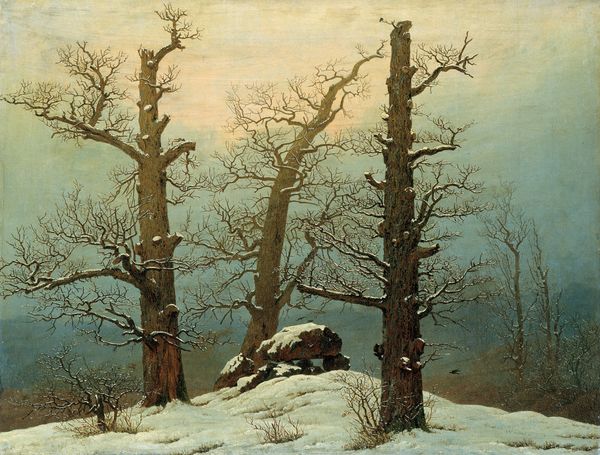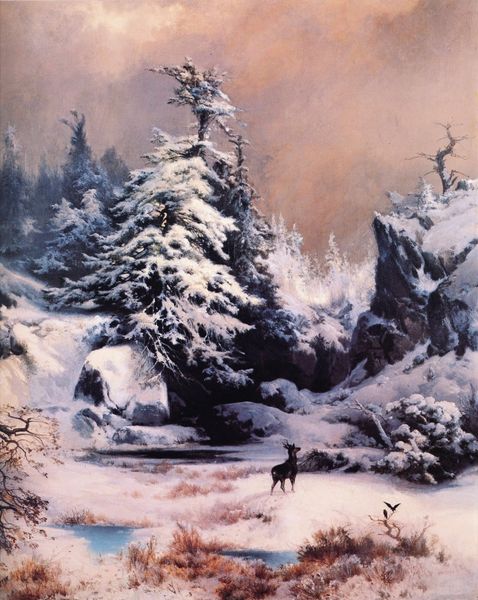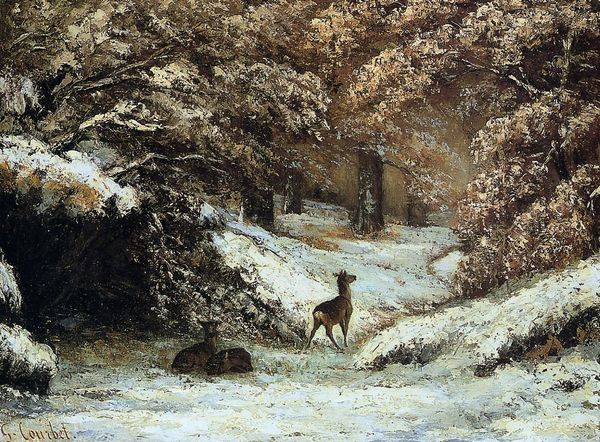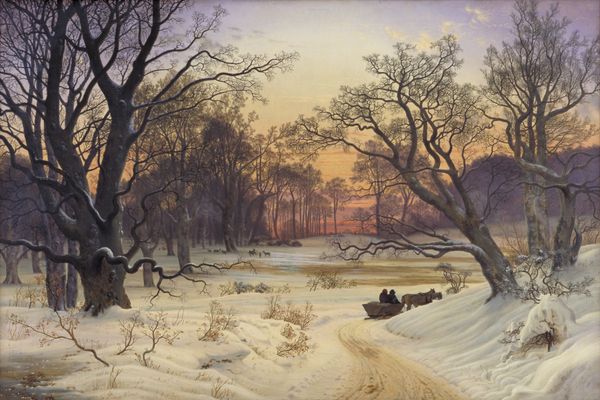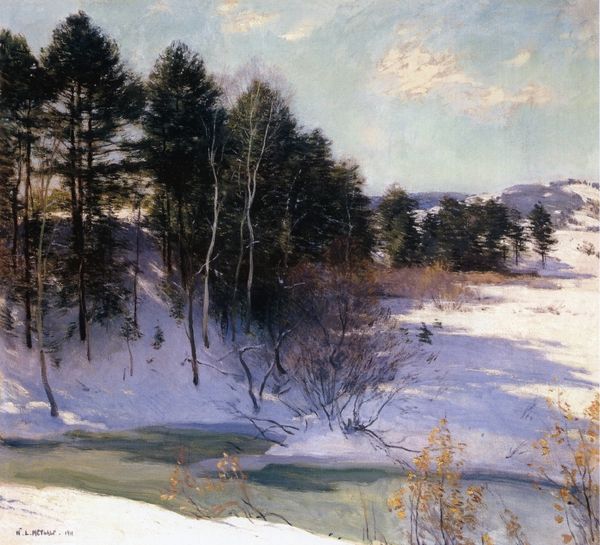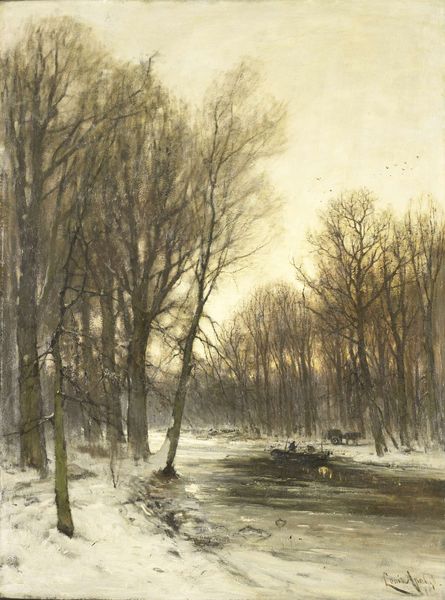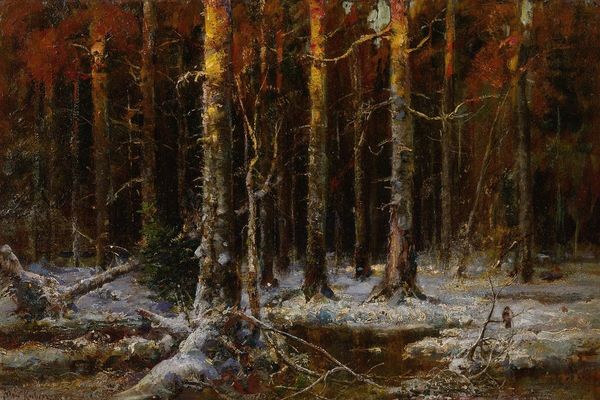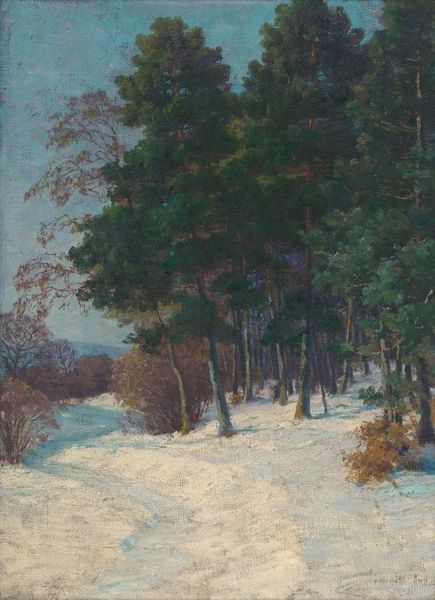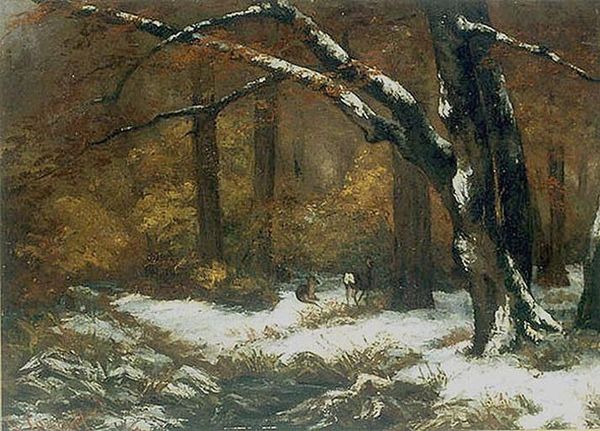
Copyright: Public domain
Curator: Before us hangs William Hart’s 1877 oil on canvas, "Winter's Morning." Editor: Mmm, feels…crisp? Like that air right before the sun really gets going, but everything’s still hushed and expectant. The blues and browns are lovely together, almost monochromatic. Curator: Note Hart’s masterful command of atmospheric perspective. The graded tonality suggests recession into deep space, structuring the scene and lending it depth. The light seems diffuse and muted, perhaps owing to the use of tempera for details. Editor: Definitely diffuse. It’s Romanticism flirting with Realism, wouldn’t you say? Like a memory – sharp details in the foreground, then everything gets…softer the farther back you go. It's lovely the way the snow highlights certain areas of the trees. And then there's that lonely deer, of course. Curator: The deer is an interesting focal point. While seemingly inconsequential within the larger landscape, its inclusion disrupts an otherwise rigidly structured composition. Does its positioning hint at something symbolic? Perhaps the vulnerability of nature in the face of approaching industrialization, an allegory in plain sight? Editor: Ooh, possibly! Or maybe it’s just…a deer. Honestly, I think sometimes we overthink the symbolism. I mean, sure, it evokes a feeling of solitude, like you could get lost in those woods so easily. Like the viewer would follow the deer into an untouched space of nature. Curator: Agreed, though perhaps its placement and the broader thematic implications aren't mutually exclusive. Editor: No, I suppose not. Curator: Well, on one hand, we have the structured geometry and masterful interplay of form that create the palpable sense of depth and distance. On the other, a somewhat subversive insertion of naturalism that reminds us of nature’s own enduring mysteries. Editor: A good combination, like a walk in the cold. Alright. Let's keep moving!
Comments
No comments
Be the first to comment and join the conversation on the ultimate creative platform.
